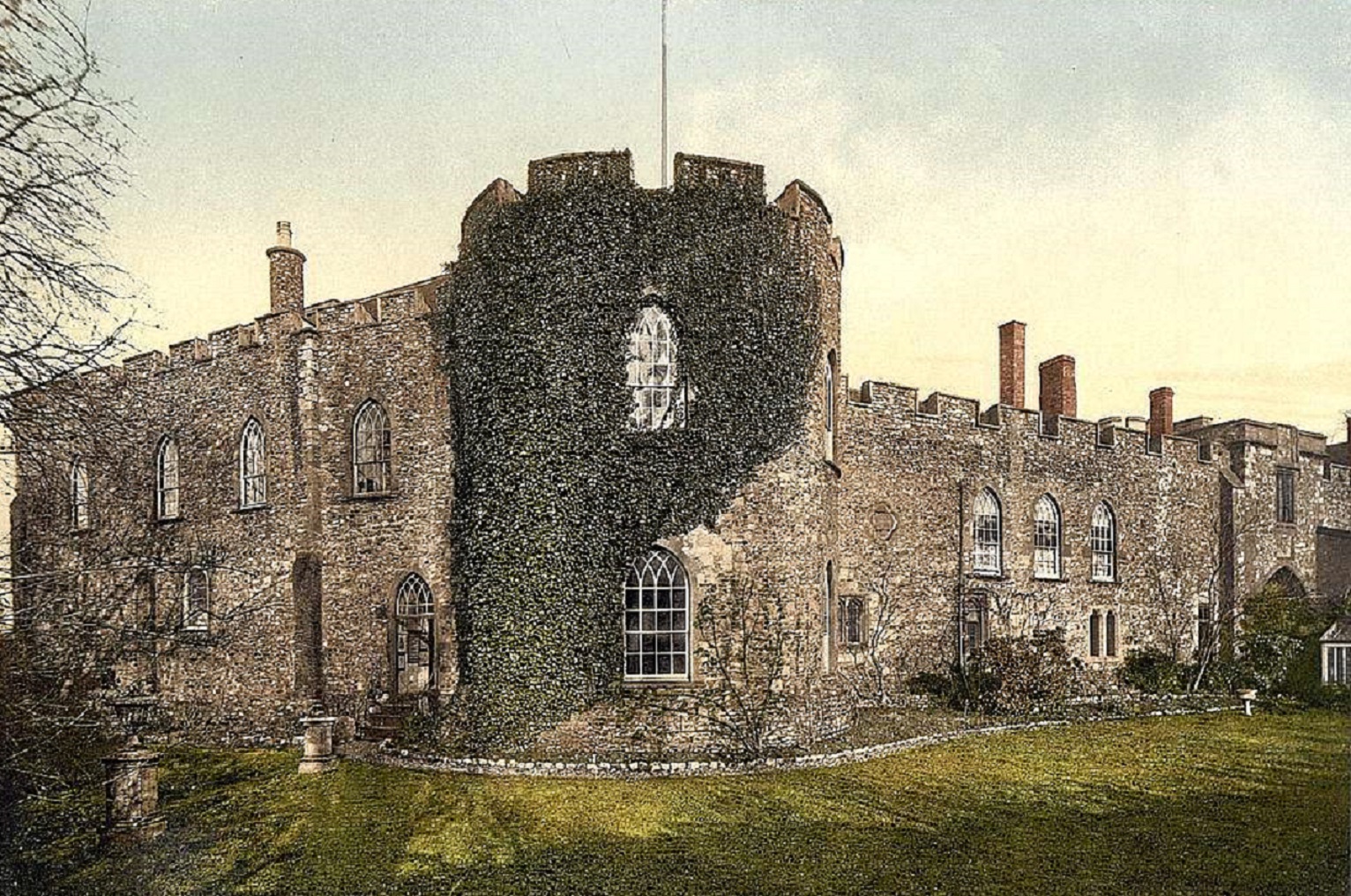In the late 15th century, Perkin Warbeck claimed to be the rightful heir to the English throne as Richard of Shrewsbury, Duke of York. It worked for a while, but his outlandish and elaborate ruse had bloody consequences.
1. He Was A Thorn In The King’s Side
Perkin Warbeck fooled nearly all of Europe when he emerged in Burgundy in 1490, claiming to be the long lost Richard of Shrewsbury, Duke of York and the rightful King of England. He hobnobbed with royalty, rubbed shoulders with an Emperor, and even commanded armies. In the end, however, the joke would be on Warbeck himself—and he would not be laughing.

2. He Made His Claim
In 1490, at the Burgundian court, a virtually unknown young man made a shocking claim. Before the royal families of Europe and their powerful courtiers, he declared that he was, in fact, the long lost Richard of Shrewsbury, Duke of York. The startling pronouncement meant that he was the rightful heir to the English throne and that Henry VII, the current King, was nothing but a usurper.
 John Everett Millais, Wikimedia Commons
John Everett Millais, Wikimedia Commons
3. He Was “Minted”
With his shocking revelation, the dashing and daring young man ignited a scintillating scandal across the whole European continent. Immediately, the Burgundians began minting coins with his likeness and Henry VII’s (many) enemies began sharpening their knives and rallied behind this new claimant to the throne. Could he really be their long lost prince? RDF Media, Princes in the Tower (2005)
RDF Media, Princes in the Tower (2005)
4. He Was A Yorkist
Perkin Warbeck’s outlandish claim to the English throne had its roots in the bloody Wars of the Roses. The civil conflict pitted Yorkists (which Perkins claimed to be) against Lancastrians in a decades-long blood feud that nearly tore the nation apart. It didn’t end until Edward IV emerged victorious. With two sons, he thought his succession was secure.
He didn't realize that he was going to be betrayed.
 Daniel Maclise, Wikimedia Commons
Daniel Maclise, Wikimedia Commons
5. He Played A Game Of Thrones
When Edward IV unexpectedly met his demise in 1483, it sparked a game of thrones that would leave even George R. R. Martin at a loss for words. Edward IV’s youngest brother, Richard III, usurped the line of the succession in the most surreptitious way. He declared his nephews—and rightful heirs—Edward V of England and his younger brother Richard of Shrewsbury, Duke of York, illegitimate. National Portrait Gallery, Wikimedia Commons
National Portrait Gallery, Wikimedia Commons
6. He Was The Missing Prince From The Tower
After depriving the two young princes of their birthright—they were just 12 and 9, respectively—Richard III next did the unimaginable. Literally “unimaginable”—because no one knows exactly what happened next. He locked the boys in the Tower of London...and no one ever saw them again. The ultimate fate of the Princes in the Tower gripped the public’s fascination for years.
Right up until the moment that Perkin Warbeck showed up.
 Paul Delaroche, Wikimedia Commons
Paul Delaroche, Wikimedia Commons
7. He Was Shrewsbury‚ Or Shrewd
When Warbeck made his proclamation in the Burgundian court in 1490, he had a compelling—if ridiculous—story to go along with his claim. He asserted that he was the long lost Richard of Shrewsbury, Duke of York. The story of his older brother Edward V’s tragic demise and his own harrowing escape from the Tower of London moved hearts—along with armies.
 John Everett Millais, CC BY-SA 4.0, Wikimedia Commons
John Everett Millais, CC BY-SA 4.0, Wikimedia Commons
8. He Was Too Innocent
Warbeck claimed that Edward V’s killers (presumably his uncle, Richard III’s hitmen) had spared him because of his “innocence,” but made him swear to conceal his true identity. He then claimed to have fled to the European mainland, growing up under the protection of Yorkist loyalists, including the influential courtier, Sir Edward Brampton.
But now, he said, he wanted what was rightfully his.
 James Northcote, Wikimedia Commons
James Northcote, Wikimedia Commons
9. He Returned Home
With the support of the Burgundians, Warbeck sailed to Cork, Ireland to assert his claim to the English throne. But, if he had been expecting an enthusiastic welcome with rose petals and throngs of cheering ardent Yorkists, then he was sorely mistaken. His return to his alleged homeland turned out to be a total non-event.
 RDF Media, Princes in the Tower (2005)
RDF Media, Princes in the Tower (2005)
10. He Wasn’t Even The First
By the time Warbeck arrived in Cork, it seemed like the Yorkists had lost their appetite for revolution. Just four years earlier, another person claiming to be Richard of Shrewsbury had turned up on their shores. The people of Ireland had thrown their support behind the young Lambert Simnel...only to have Henry VII capture Simnel and turn him into a Groom of the Stool—he made the pretender help him poop.
It’s as gross and unglamorous as it sounds, and Warbeck was determined not to suffer the same smelly fate.
 Wikimedia Commons, CC BY-SA 4.0, Wikimedia Commons
Wikimedia Commons, CC BY-SA 4.0, Wikimedia Commons
11. He Couldn’t Convince Anyone
Much to his surprise—and dismay—Warbeck found few Yorkists in Ireland willing to believe his little lie. Not only did he fail to assemble an army large enough to overthrow Henry VII, but he could barely convince anyone that he was Richard of Shrewsbury. Sensing that he needed more proof of his claim, Warbeck returned to mainland Europe.
Fortunately, he had a secret weapon. Rdf Media, Princes In The Tower (2005)
Rdf Media, Princes In The Tower (2005)
12. He Made A Powerful Friend
Warbeck sent shockwaves across Europe when he arrived at the most powerful court in all the land; that of Charles VIII of France. With Charles VIII’s apparent support, Warbeck gained a massive amount of attention and credibility. But, it’s not entirely clear that Charles VIII genuinely believed Warbeck. He may just have been using him to anger Henry VII.
And anger him he did.
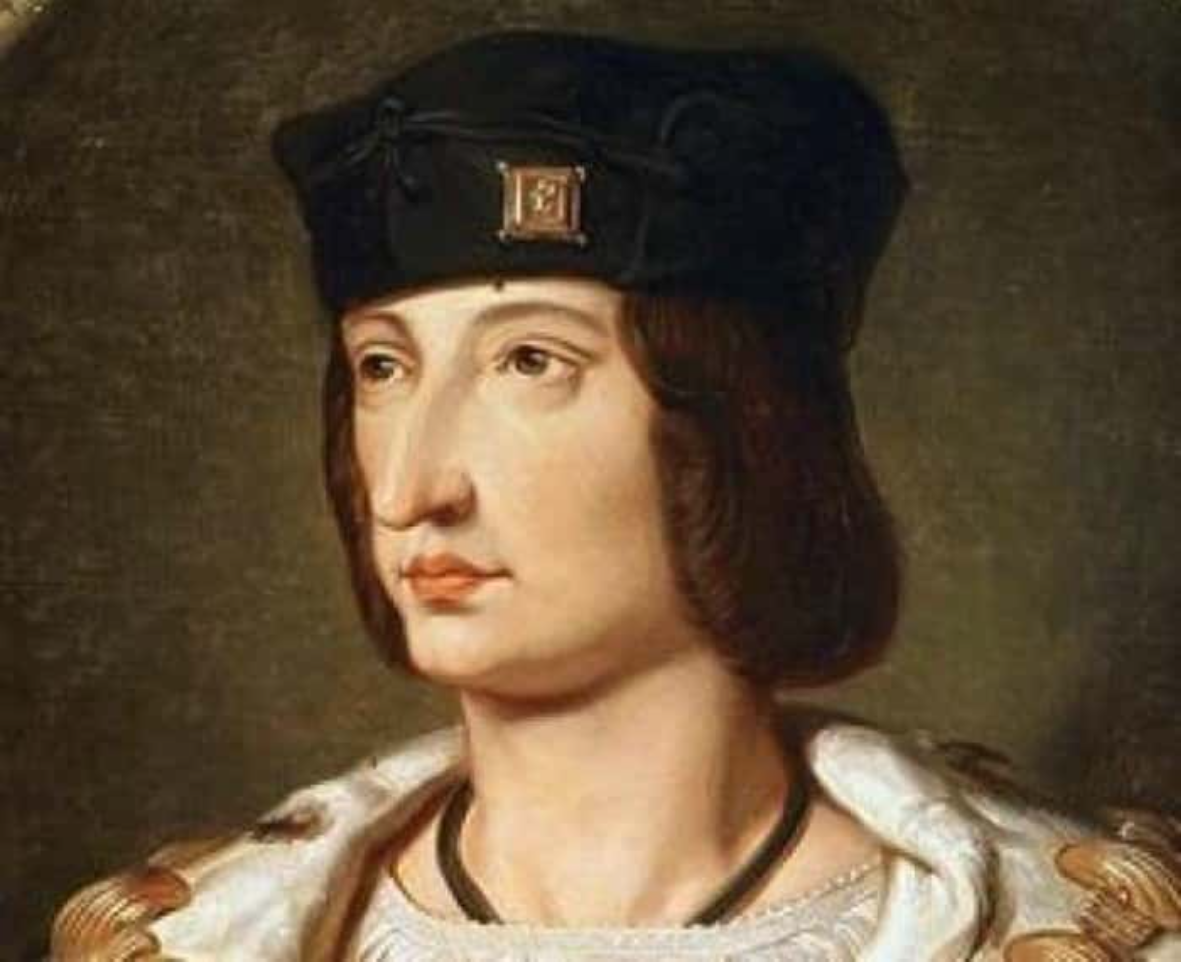 After Jean Perréal, Wikimedia Commons
After Jean Perréal, Wikimedia Commons
13. He Was A Pawn, Not A Prince
After learning that Charles VIII had recognized Warbeck’s silly claim to the English throne, Henry VII flew into a rage. He immediately invaded France with a force of 26,000—exactly as Charles VIII had wanted. Warbeck may have been claiming to be the missing Prince, but the French King had just used him as a pawn in his grand strategy—and everyone who plays chess knows: pawns are disposable.
 Dulwich Picture Gallery, Wikimedia Commons
Dulwich Picture Gallery, Wikimedia Commons

History's most fascinating stories and darkest secrets, delivered to your inbox daily.
14. He Was The Only Loser
Charles VIII’s support for Warbeck’s claim was very likely an elaborate ruse. Almost as elaborate as Warbeck’s claim to the throne itself. Shortly after Henry VII’s forces arrived in France, the French King sued for peace. The terms of the agreement heavily favored both Charles VIII and Henry VII.
Really, the only loser after the Peace of Étaples was the problematic pretender, Warbeck.
 RDF Media, Princes in the Tower (2005)
RDF Media, Princes in the Tower (2005)
15. He Had To Flee—Again
Warbeck assumed he had discovered a friend in Charles VIII, although he was merely the target of someone else's jest. Henry VII agreed to recognize the French claim over the contested Duchy of Brittany. All he asked in exchange was that Charles VIII withdraw his support for Warbeck and kick him out of the French court.
Warbeck, however, wasn’t finished just yet.
 François-Séraphin Delpech,Wikimedia Commons
François-Séraphin Delpech,Wikimedia Commons
16. He Went Back To The House Of York
Thankfully, Warbeck still had supporters all across Europe who truly believed that he was Richard of Shrewsbury. In fact, he had as many supporters as Henry VII had enemies—and Henry VII a lot of enemies. Expelled from France, Warbeck traveled to Mechelen in Burgundy and found perhaps his most powerful and convincing supporter to date.
If anyone could verify his identity as Richard of Shrewsbury, it would be another member of the House of York.
 Rdf Media, Princes In The Tower (2005)
Rdf Media, Princes In The Tower (2005)
17. He Ran To His Aunty
Margaret of Burgundy, Dowager Duchess, was either the biggest dupe or even more conniving than Charles VIII. She was the widow and successor of Charles the Bold, Duke of Burgundy but, more importantly, she was a member of the House of York. You see, Margaret was the younger sister of Edward IV, father of Richard of Shrewsbury.
In other words, she was Warbeck’s “aunt”.
 Starz!, The White Princess (2017)
Starz!, The White Princess (2017)
18. His Aunt Backed Him Up
In her grief at the loss of her two young nephews, Margaret of Burgundy publicly declared her recognition that Warbeck was Richard of Shrewsbury. The gravity of her acknowledgement as a member of the House of York totally dispelled any doubts that remained. There was just one small caveat: Margaret of Burgundy was probably the least credible Yorkist in all the lands.
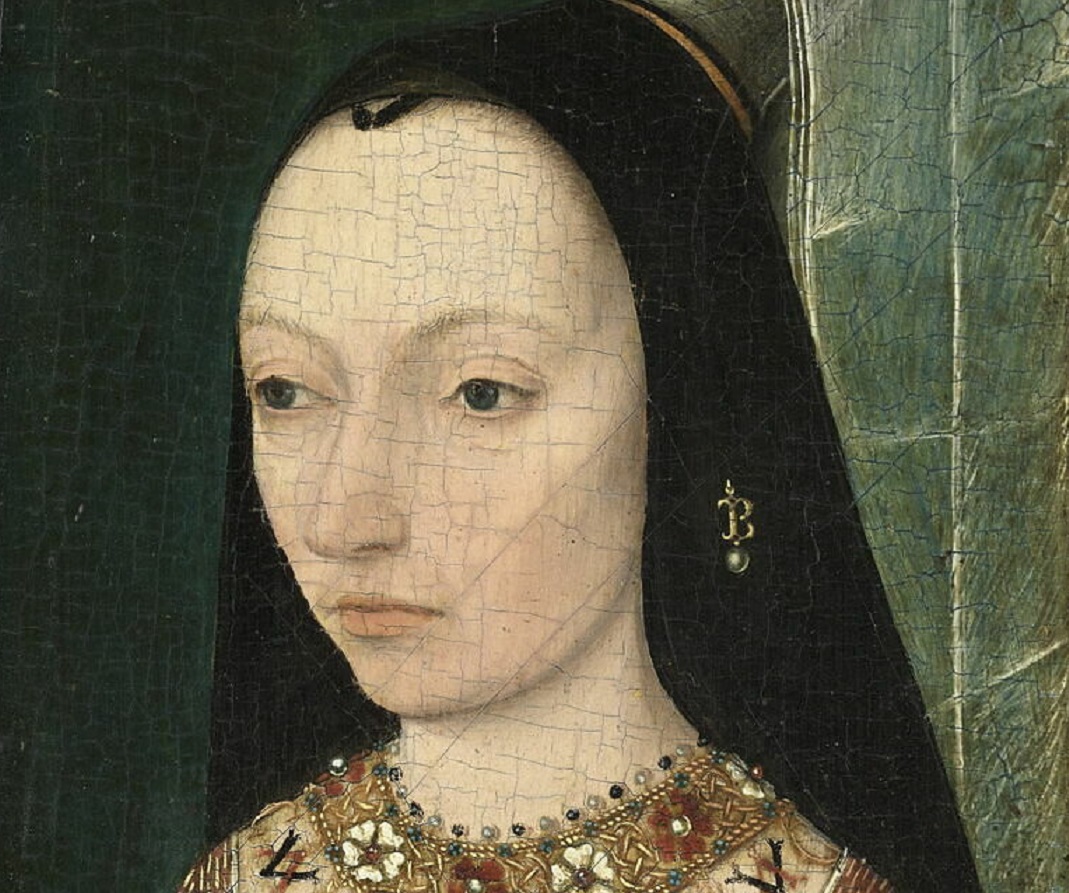 Louvre Museum, Wikimedia Commons
Louvre Museum, Wikimedia Commons
19. He Never Actually Met The Lady
Most of Europe took Margaret at her word. She was, after all, the grief-stricken aunt of the lost Princes in the Tower. She was also the least qualified person to verify Warbeck’s identity. Even though Margaret was Richard of Shrewsbury’s aunt, she had never actually met the kid. She had moved to Burgundy and married Charles the Bold years before either Richard of Shrewsbury or Edward V were even born.
Plus, she had an ax to grind against Henry VII.
 Master of Girart de Roussillon, Wikimedia Commons
Master of Girart de Roussillon, Wikimedia Commons
20. He Was Now Part Of The Family
No one actually knows whether or not Margaret truly believed Warbeck to be her dearly beloved (if estranged) nephew. But, even if she didn’t believe him, she certainly acted like she did. Margaret welcomed the young man into the fold of the House of York and groomed him to overthrow Henry VII. With the full support of the legitimate House of York and all of its powerful allies, Warbeck was ready to relaunch his claim.
 Rdf Media, Princes In The Tower (2005)
Rdf Media, Princes In The Tower (2005)
21. He Ignored The King
Enraged, Henry VII sent word to Philip of Habsburg, Duke of Burgundy—Margaret’s step-grandson. He demanded Warbeck’s immediate expulsion from the Burgundian court. Needless to say, Philip of Habsburg ignored the request, as it seemed that Warbeck had fooled all of mainland Europe into believing his claim. Including the illustrious Holy Roman Emperor himself.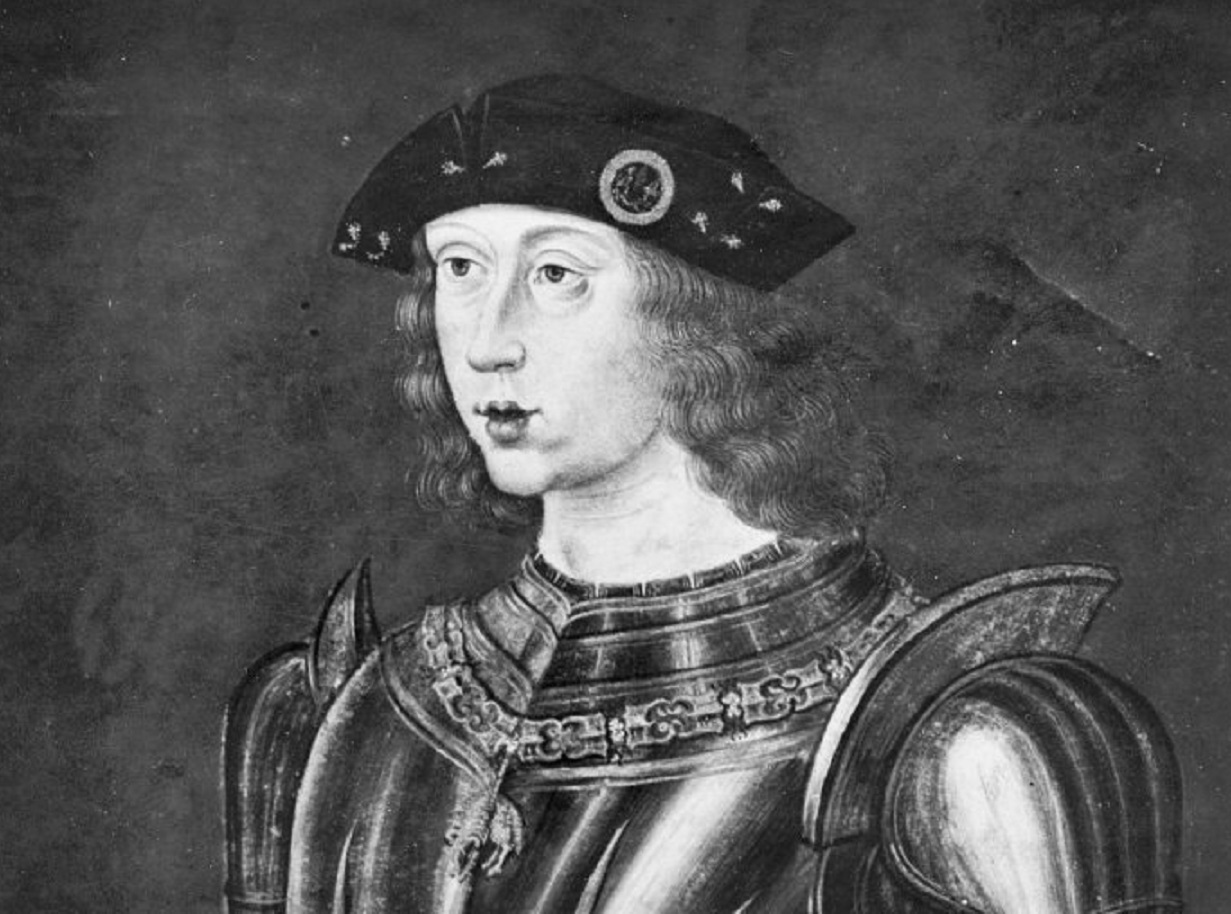 Rijksdienst voor het Cultureel Erfgoed, CC BY-SA 4.0 , Wikimedia Commons
Rijksdienst voor het Cultureel Erfgoed, CC BY-SA 4.0 , Wikimedia Commons
22. He Received Imperial Recognition
Before long, everyone (except for Henry VII, of course) began referring to Warbeck as the Duke of York. He even attended the funeral of Frederick III, Holy Roman Emperor where Frederick III’s successor, Emperor Maximilian I, hailed him as King Richard IV of England.
For Henry VII, stewing in London, Warbeck’s little ruse had gone too far.
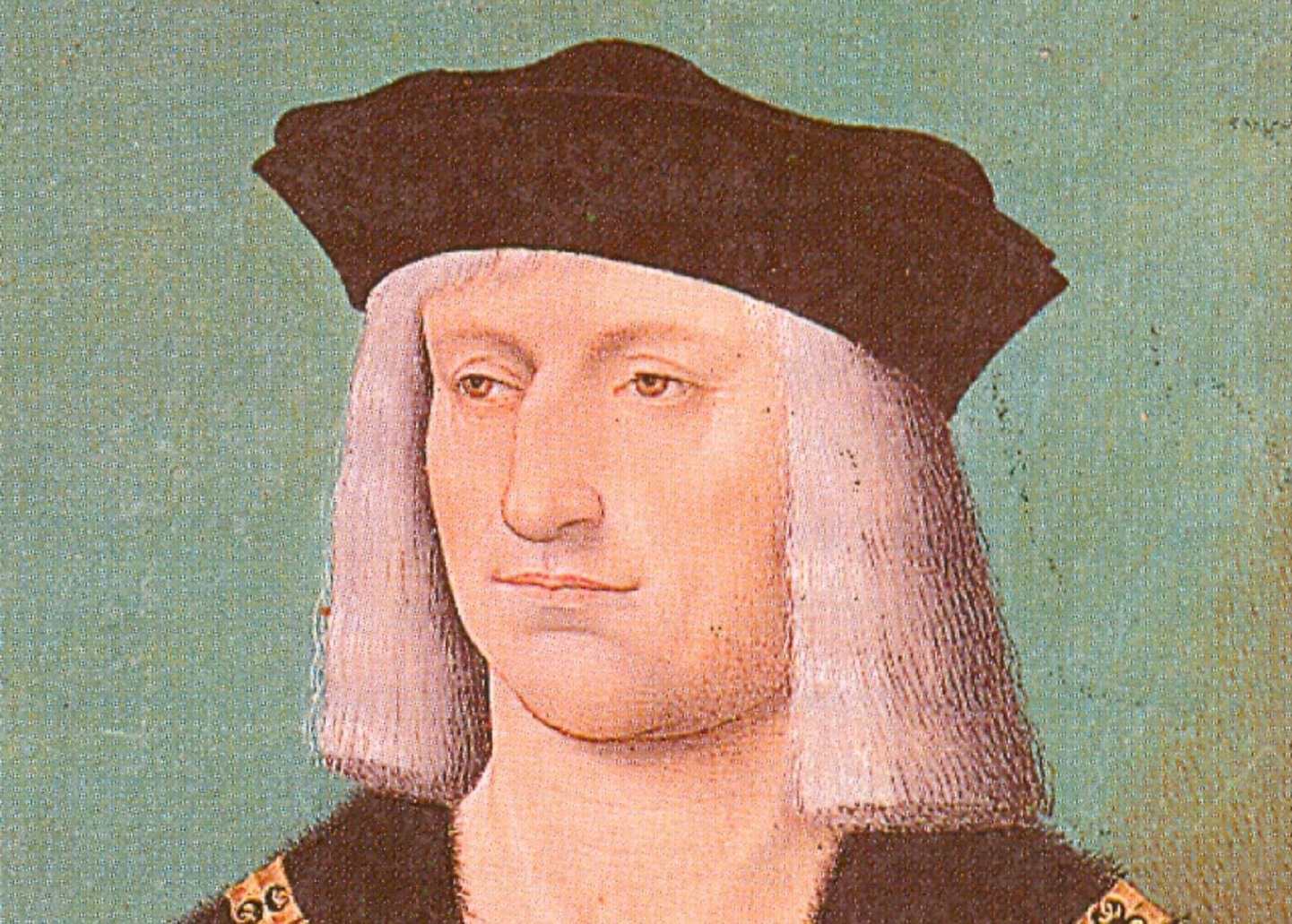 After Joos van Cleve, Wikimedia Commons
After Joos van Cleve, Wikimedia Commons
23. He Didn’t Like The “Deal”
Warbeck’s little practical joke turned bloody when he set sail for the British Isles once again, this time with a band of mercenaries funded by Margaret of Burgundy. He landed at the coastal town of Deal in Kent—but if he thought that the people of Deal were going to fall for his ploy as the Burgundians had, he was sorely mistaken.
The people of Deal gave him, well, a pretty raw deal. Rdf Media, Princes In The Tower (2005)
Rdf Media, Princes In The Tower (2005)
24. He Couldn’t Even Get Off His Ship
From the minute Warbeck’s small fleet reached the shores of Deal, he encountered a strong resistance. Forces loyal to Henry VII promptly engaged Warbeck's pack of mainland mercenaries in combat, driving them back to the sea. Warbeck himself never even managed to disembark from his ship before turning tail and running.
That would soon become something of a theme.
 Rdf Media, Princes In The Tower (2005)
Rdf Media, Princes In The Tower (2005)
25. He Had To Find More Dupes
Warbeck had grossly misread the situation. Few people in English territories, as it turns out, were willing to believe his nonsense lies. With his tail between his legs, he set sail once again for Ireland, where he knew he could find more Yorkists—and more hatred for Henry VII.
Once there, he teamed up with Maurice FitzGerald, 9th Earl of Desmond.
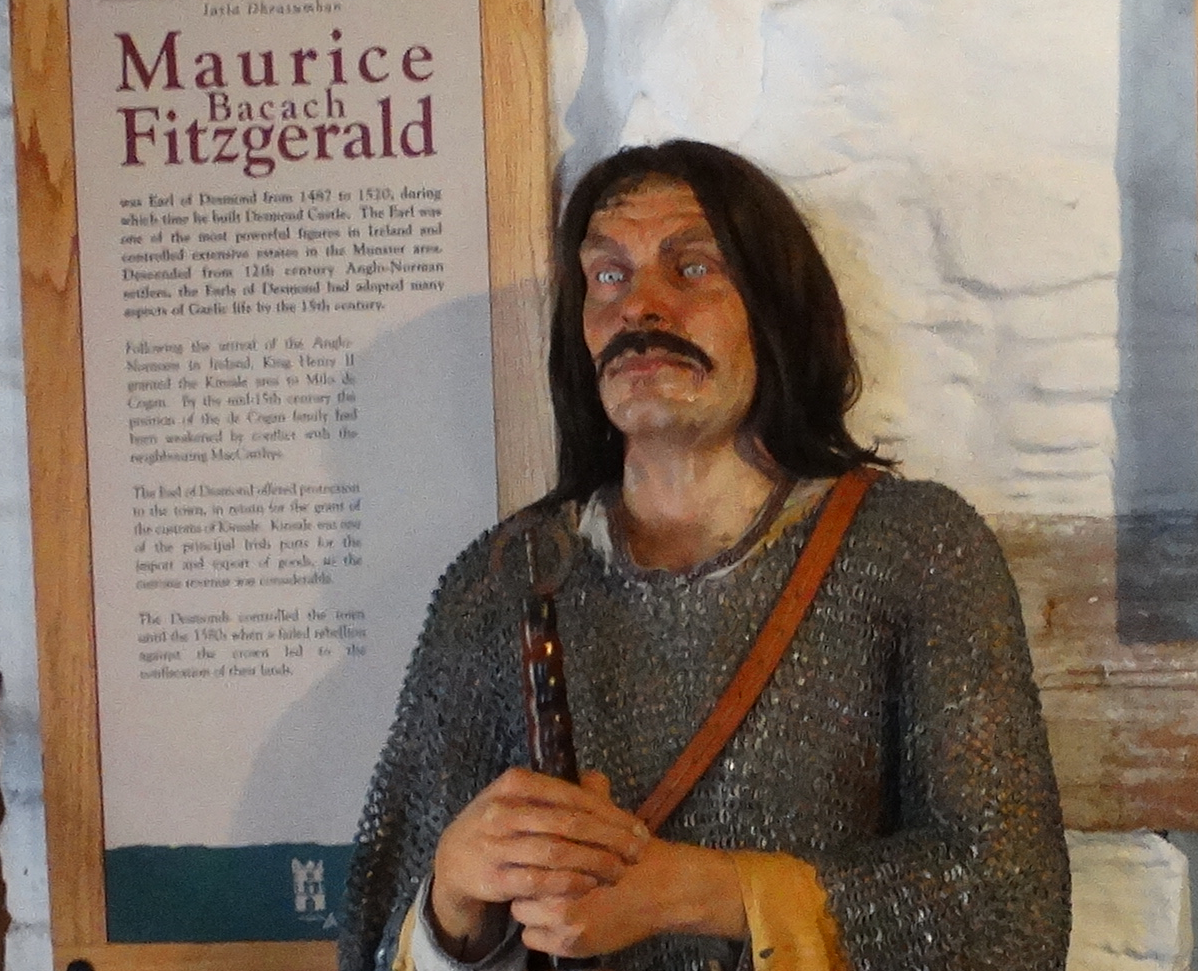 The Speckled Bird, CC BY-SA 4.0, Wikimedia Commons
The Speckled Bird, CC BY-SA 4.0, Wikimedia Commons
26. He Was Desperate
After the disaster at Deal, Warbeck knew that there was no turning back. His elaborate ruse had already resulted in bloodshed. He either had to overthrow Henry VII or, well, you can use your imagination. That's when he was forced into an act of utter desperation: He laid siege to the town of Waterford along with the support of FitzGerald and his mercenaries.
But, after eleven days, Warbeck proved himself to be as incompetent a commander as he was a pretender.
27. He Was An “Ape”
Prior to Waterford, Warbeck had made fools of European royalty. But, after another disastrous defeat, he was the one looking like a fool. As Warbeck once again went running for his life—this time to Scotland—Henry VII laughed hysterically. He made light of Warbeck’s pathetic attempt with a brutal insult, “I suppose they will crown an ape next”.
 George S. Stuart, CC BY-SA 3.0 , Wikimedia Commons
George S. Stuart, CC BY-SA 3.0 , Wikimedia Commons
28. He Was Welcome In Scotland
James IV of Scotland welcomed Warbeck warmly to his frigid kingdom in late 1495. The staunchly anti-English King of Scotland happily recognized Warbeck’s claim to the English throne. He even quickly arranged a marriage for Warbeck to Lady Catherine Gordon, the daughter of George Gordon, 2nd Earl of Huntly, and celebrated the event in style.
 National Galleries Scotland, Wikimedia Commons
National Galleries Scotland, Wikimedia Commons
29. He Had An Elaborate Wedding
James IV threw elaborate wedding celebrations for Warbeck and his new bride. He held a fantastic jousting tournament and gifted Warbeck with armor and fine purple silks. The clothing suggests that Warbeck even fought in the tournament alongside James IV—a high honor.
Once again, however, it looked like Warbeck, not James IV, was the fool.
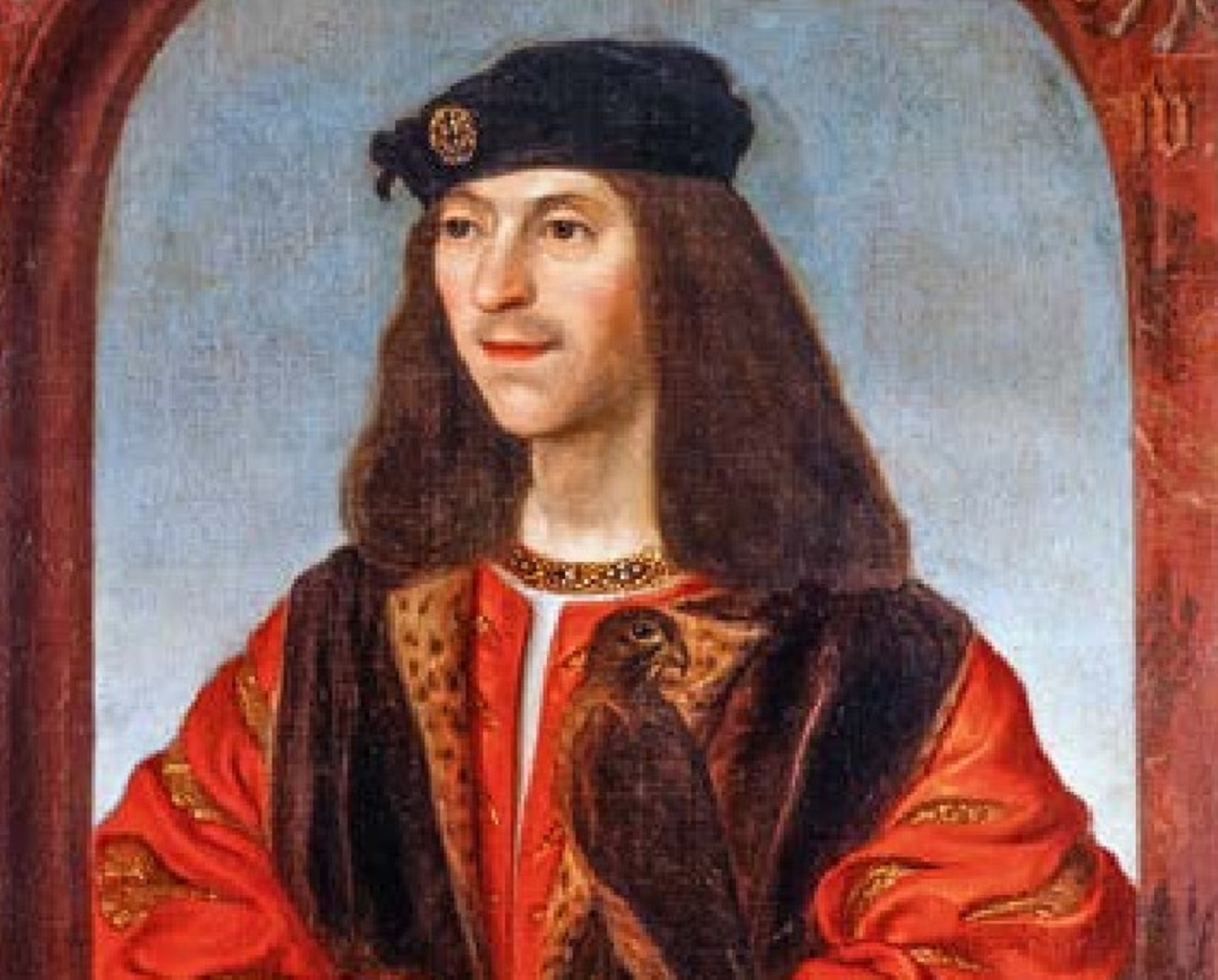 Scottish National Gallery, Wikimedia Commons
Scottish National Gallery, Wikimedia Commons
30. He Married Beneath His Station
For the alleged rightful heir to the English throne, Warbeck had married severely below his station. Even though Lady Catherine Gordon was, supposedly, quite fair, she was merely an earl’s daughter. If James IV truly believed Warbeck’s claims, he would not have married him off to a lesser noblewoman. He just wanted him happy enough to do his bidding.
 RDF Media, Princes in the Tower (2005)
RDF Media, Princes in the Tower (2005)
31. He Just Wanted The Attention
As it turns out, James IV had a lot in common with Charles VIII of France. He had only really wanted to use Warbeck in order to get better terms out of a peace deal with Henry VII. In late 1496, he marched south with Warbeck and a small army in order to cause some trouble. They tore down some towers, waved their banners and then marched back home.
It was just enough for Warbeck to get Henry VII’s attention. Ever heard of the saying, "Be careful what you wish for?" NationalGalleries.org, Wikimedia Commons
NationalGalleries.org, Wikimedia Commons
32. He Was Just Another Pawn
After Warbeck’s laughable disaster at Waterford, Henry VII had almost forgotten about him. But the skirmishes along the nordern border were enough to get Warbeck back on Henry VII’s radar. Unfortunately for Warbeck, that was only good news for James IV, who secured a nice deal with Henry VII—and then promptly sent Warbeck packing once again.
 Rdf Media, Princes In The Tower (2005)
Rdf Media, Princes In The Tower (2005)
33. He Was Totally Cuckoo
Having secured peace with Henry VII, James IV had no more use for Warbeck. How he got rid of him, however, was just downright disrespectful—pretender or not. James IV hired a ship for Warbeck, appropriately named the Cuckoo, along with its crew, and simply sent Warbeck on his way.
This resilient pretender, however, always seemed to have a way of landing on his feet.
 Unknown Author, CC BY 4.0, Wikimedia Commons
Unknown Author, CC BY 4.0, Wikimedia Commons
34. He Butted In
After so many embarrassing defeats, Warbeck knew that he wouldn’t be able to rally enough support behind his outlandish cause. But that didn’t mean that he couldn’t capitalize on someone else’s. That’s precisely what he did when he arrived at Land’s End in Cornwall after the Second Cornish Uprising in 1497, against Henry VII’s usury rule. Longman, Green, Longman and Roberts - London , Picryl
Longman, Green, Longman and Roberts - London , Picryl
35. He Got Corny In Cornwall
As far as Warbeck was concerned, no one really had to believe his lies anymore. They just had to hate Henry VII. And, in Cornwall, they hated him wholeheartedly. When Warbeck arrived in 1497, he promised to put an end to Henry VII’s high taxes if only the people followed him into battle.
Or, as it turns out, if they followed him away from it. Rdf Media, Princes In The Tower (2005)
Rdf Media, Princes In The Tower (2005)
36. He Had The Courage Of A Clown
The Cornish people rallied behind Warbeck and even crowned him as Richard IV. Now with an army numbering 6,000 strong—and a crown of his own—Warbeck marched towards Taunton and his (allegedly) rightful throne. Unfortunately, he didn’t exactly have the courage of a king. He did, however, have the cowardice of a clown.
37. He Ran Away
Henry VII had clearly grown tired of Warbeck’s silly game of thrones. He sent his best general, Giles Daubeney, 1st Baron Daubeney, along with a sizable contingent to Taunton to deal with Warbeck once and for all. The minute Warbeck caught sight of Daubeney’s scouts, however, he turned coward and deserted his Cornish army.
Finally, it seemed, the jig was up.
 Rdf Media, Princes In The Tower (2005)
Rdf Media, Princes In The Tower (2005)
38. He Had A Parade In His Dishonor
All alone and out of places to run to, Henry VII finally captured Warbeck in Hampshire and hauled him back to London, clapped in irons. He had managed to make fools out of most of Europe’s royal houses but, at last, he was the one people were laughing at. Henry VII had Warbeck “paraded through the streets on horseback” as the people of London jeered at him in derision.
 Rdf Media, Princes In The Tower (2005)
Rdf Media, Princes In The Tower (2005)
39. He Went Back To The Tower
In an ironic twist, Warbeck’s story ended where he claimed it had all started. Henry VII had him imprisoned in the dreaded Tower of London—the same place where the real Richard of Shrewsbury likely met his gruesome end. Fortunately for Warbeck, Henry VII was far more merciful to him than Richard III had presumably been to the real Princes in the Tower. Murray, J. Somerset, 1904, Picryl
Murray, J. Somerset, 1904, Picryl
40. He Gave Up The Gig
Surprisingly, despite all of the trouble that Warbeck had caused, Henry VII was willing to forgive everything. All that Warbeck had to do was admit that he was just a lowly imposter and not the real Richard of Shrewsbury, Duke of York. Warback agreed to the deal, confessed his lies, and, somehow, still managed to come out ahead.
 Rdf Media, Princes In The Tower (2005)
Rdf Media, Princes In The Tower (2005)
41. He Was Living Like A King
Warbeck was lucky that Henry VII didn’t take his head off—yet. Quite the opposite, in fact. After his confession, Henry VII gave Warbeck a cushy appointment at court and even gave him a seat at royal banquets. Turns out, he didn’t have to be a king to live like one. His only real punishment was that he wasn’t allowed to sleep with his wife.
But Warbeck still wasn’t satisfied.
 Rdf Media, Princes In The Tower (2005)
Rdf Media, Princes In The Tower (2005)
42. He Tried To Escape
Warbeck never really knew when he had taken a joke too far. Even after Henry VII’s merciful “punishment”, he still couldn’t stop telling lies. Just eight months into his new life, he tried to escape from the palace. Needless to say, he was about as gifted an escape artist as he had been a commander. Henry VII’s forces quickly recaptured him.
Certainly, he must have learned his lesson by now, right?
 Rdf Media, Princes In The Tower (2005)
Rdf Media, Princes In The Tower (2005)
43. He Smooth Talked His Captors
This time, Henry VII thought he might show Warbeck what really happened to treasonous pretenders. He had Warbeck locked in the Tower of London in solitary confinement. However, Warbeck somehow managed to talk the guards into taking him out of solitary confinement and giving him a cellmate. But, for the pretend Duke of York, not just any old cellmate would do.
44. He Went Back To His Old Ways
Against the odds, Warbeck had managed to charm his way out of solitary. He talked his way into a new cell but, in no time at all, was back to his old tricks. The guards placed him in a cell next to none other than Edward Plantagenet, 17th Earl of Warwick—another claimant to the English throne. From the looks of it, Warbeck was not done playing pretend quite yet.
45. He Met His Cousin
Warbeck’s new next door neighbor wasn’t just any old claimant to the English throne. As the son of George Plantagenet, 1st Duke of Clarence, he was the nephew of Edward IV. In other words, he was the cousin of the real Richard of Shrewsbury. With the ear of yet another member of the House of York, Warbeck plotted his next move.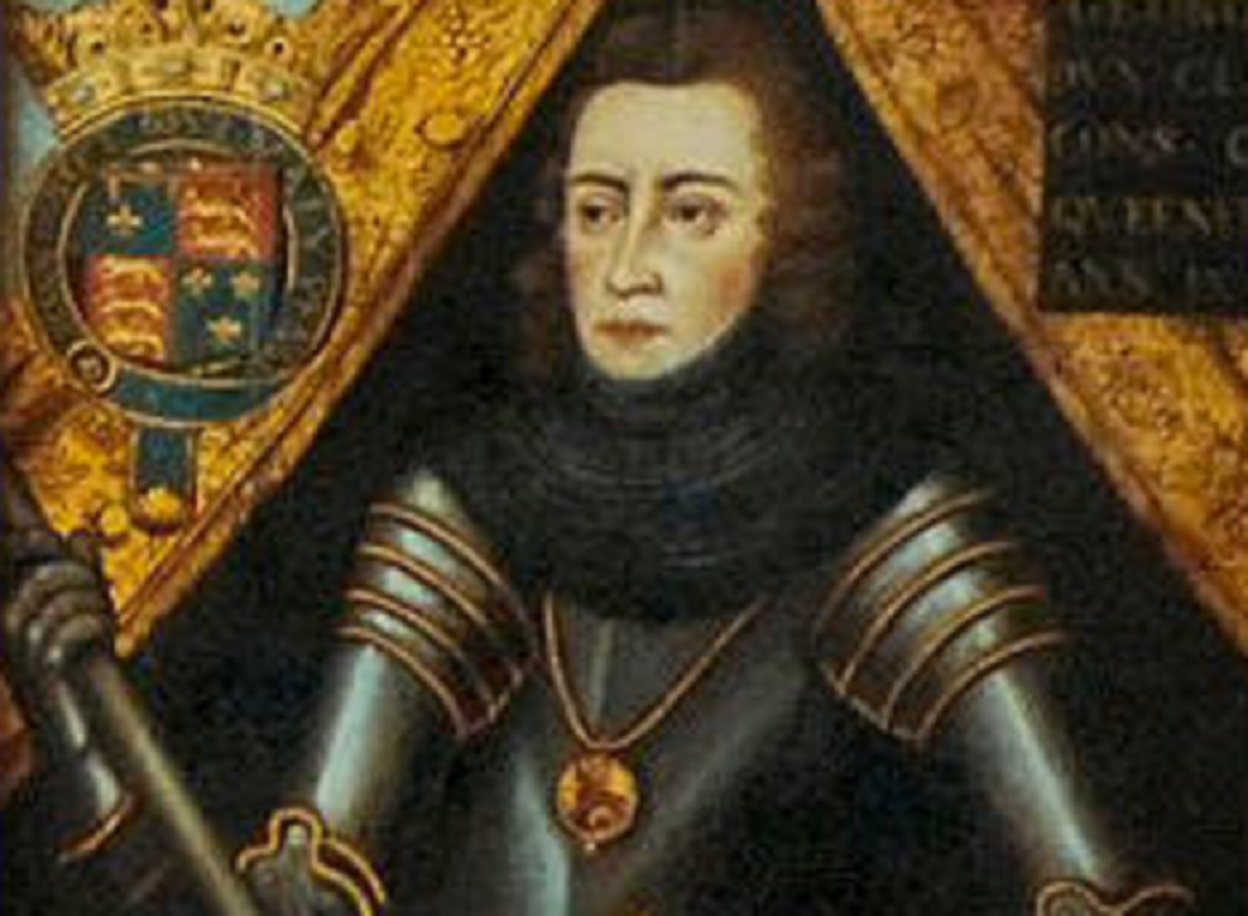 Unknown Artist, Wikimedia Commons
Unknown Artist, Wikimedia Commons
46. He Plotted Treason
It’s not clear whether or not Edward Plantagenet believed that Warbeck was his actual cousin. But once again, playing along with the ruse proved to be useful. At least, at first. Together, Warbeck and Plantagenet plotted their escape from the Tower. They were going to burn the place down, flee to Flanders, then yadda yadda yadda, usurp Henry VII.
For Warbeck, however, the 100th attempt would not be the charm, believe it or not.
 Rdf Media, Princes In The Tower (2005)
Rdf Media, Princes In The Tower (2005)
47. His Plans Fell Through
Even within the Tower of London, Warbeck had supporters—and detractors. When one of the gaolers caught wind of Warbeck’s and Plantagenet’s new plot to overthrow Henry VII, he spilled the beans. This time, however, Warbeck had finally pushed Henry VII too far. His days of playing pretend were about to come to a grizzly end.
 RDF Media, Princes in the Tower (2005)
RDF Media, Princes in the Tower (2005)
48. He Just Wanted To “Hang”
Henry VII hauled Warbeck and Plantagenet off to Tyburn in London. At long last, Warbeck had to publicly confess that he was not, in fact, Richard of Shrewsbury and renounce any claim he thought he had to the English throne. Not that it mattered anymore. After his confession, Henry VII had Warbeck hanged for treason—and for not knowing when to quit.
 Henry Marriott, Wikimedia Commons
Henry Marriott, Wikimedia Commons
49. He Ended The House Of York
There was a particularly cruel twist to Warbeck’s game of thrones. At first, he had given hope to Yorkists all over Europe that the House of York still lived. Ironically, his treasonous plot with Edward Planatagenet ended the House of York for good. As it turns out, Edward had been the last surviving real claimant of the House of York—hanged for plotting with Warbeck.
50. He Was Definitely Not A Duke
It’s almost a certainty that Warbeck was not, in fact, Richard of Shrewsbury. However, most of what we think we know about him, including his unlikely story, comes from his 1499 confession from the gallows. It was a confession, however, that he had given under duress from the very man he was trying to usurp. So who, really, was Perkin Warbeck?
 Rdf Media, Princes In The Tower (2005)
Rdf Media, Princes In The Tower (2005)
51. He Was Just A Spoiled Rich Kid
Before swinging from his neck, Warbeck finally revealed his real identity. According to his confession, he was just the son of a well-off Belgian family who had been in all the right places at all the right times. However, his tell-all gallows confession seemed to be almost too convenient, and altogether as implausible as his outlandish claims.
 Rdf Media, Princes In The Tower (2005)
Rdf Media, Princes In The Tower (2005)
52. He Was From Belgium
In his confession, Warbeck provided specifics that increasingly cast doubt on his authenticity rather than confirming it. He claimed his mother had been Katherine de Faro and his father, John Osbeck, the comptroller for the city of Tournai in modern day Belgium. Translated to the old French, “Osbeck” seemed similar enough to “Werbecque”.
There were even birth records.
53. He Was Too Clever For His Own Good
For centuries, Yorkists and historians alike held out hope that Warbeck’s confession was just a pack of lies that Henry VII made him say. But in the 19th century, almost irrefutable evidence surfaced, proving that Warbeck was nothing more than just a clever, if cowardly, pretender to the English throne. His lies had simply run ahead of his ability to spin them. Rdf Media, Princes In The Tower (2005)
Rdf Media, Princes In The Tower (2005)
54. His Birth Certificate Surfaced
The 19th century historian James Gairdner made a startling discovery that almost certainly proved that Warbeck was not, in fact, Richard of Shrewsbury. He uncovered birth records, revealing that a certain “Perquin de Warbecque” was the son Jehan de Warbecque. This did not, however, prove that he wasn’t a member of the House of York. Rdf Media, Princes In The Tower (2005)
Rdf Media, Princes In The Tower (2005)
55. He May Actually Have Been A Prince After All
According to all of the contemporary reports, Warbeck bore a striking resemblance to Edward IV. Too great a resemblance, in fact, to be a mere coincidence. Many still claim that Warbeck could very well have been one of Edward IV’s many illegitimate children. Or, perhaps, even the child of Margaret of Burgundy or Richard III.
After all these years, it's likely that we'll never really know the real identity of this preposterous pretender.
 Ann Longmore-Etheridge ,Flickr
Ann Longmore-Etheridge ,Flickr



